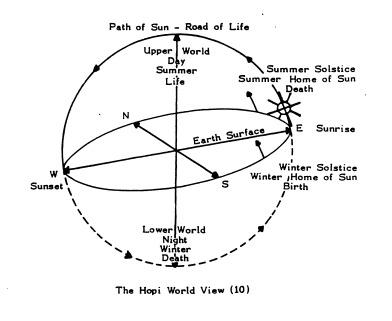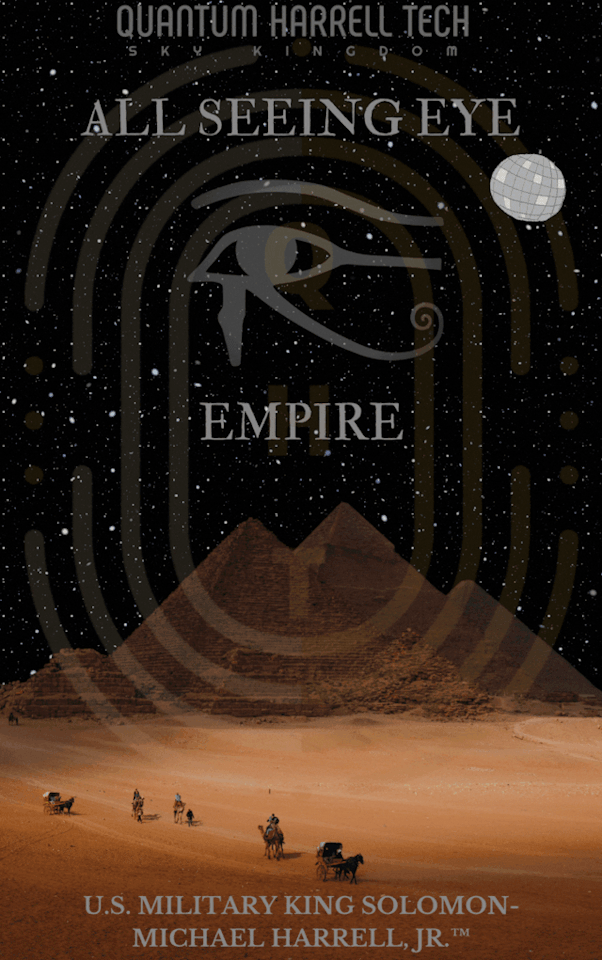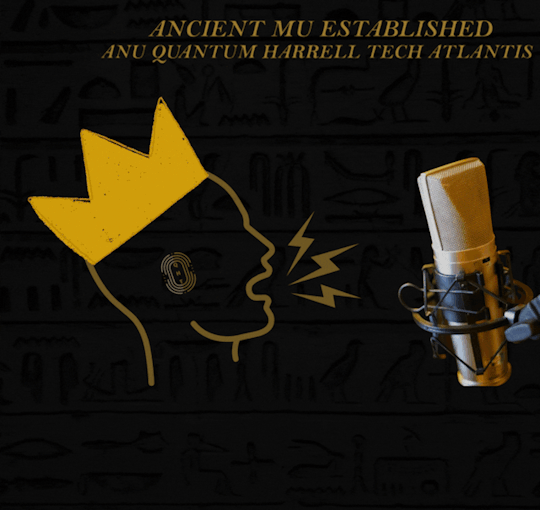#Hopi tribe
Text

Crucita - Old Hopi Dress, Joseph Henry Sharp, ca. 1920
#art#art history#Joseph Henry Sharp#portrait#portrait painting#Native Americans in art#Hopi#Hopi tribe#New Mexico#Taos Society of Artists#American art#20th century art#oil on canvas#Buffalo Bill Center of the West
186 notes
·
View notes
Text

Hopi basket, c.1800s.
Region: Arizona.
The Hopi are a Pueblo people, named for the are they inhabited. They continued the tradition of basketry that reaches back to the ancient peoples of the area. Basketry artefacts of the ancestors of the Pueblo tribes has been discovered ere, and these peoples have been dubbed the ‘Basket Maker Culture’ by archaeologists.
The trade network of the Pueblo extensive , and the decoration of goods was much influenced by contact with other cultures, including Mexican. Basket-making was exclusively carried out by women, whose wisdom and knowledge of the craft was essential for the making of quality bowls and baskets used and traded by the tribe. They understood the ecology of the surrounding area, and knew where the plants used in the making of the fibres could be found. They made assessments of the value of the materials and prepared them for specific uses. Many plants were used to make fibres from which the baskets were woven, including roots and grasses. The material chosen depended on the function of the basket – whether it needed to be particularly strong or water-retentive. Baskets were used for cooking until superseded by clay pots; the fibres were very tightly woven and any liquid they held would cause the material to swell and so retain it. Hot rocks were then put into the baskets to cook the contents.
Source: ‘Folk Art’, Susann Linn-Williams, pp. 182 – 83.
#Native American#Native American women#Hopi tribe#Pueblo#traditional crafts#trade#basket#cooking#Arizona#utensils
5 notes
·
View notes
Text
The Adventures of the Young Spider Grandmother
A wildly tasteless young adult adaptation of the Hopi flood myth and the discovery of the Fourth World.
#bad idea#movie pitch#pitch and moan#flood myth#young adult#hopi#native american#indigenous#indigineous people#hopi tribe#flood#fourth world#spider grandmother
0 notes
Text
Have you heard new blue sun by Andre 3000?
There seems to be a connection with the Hopi tribes prophecy with an ancient ‘blue sun’ they called the Kachina, but also know a the star Sirius.
Take a look at the article and it’s prophecy and tell me what you think!
I think Andre is really in tune right now and his album is picking up on the frequency shift itself. However, it’s a good read so far and the album is beautiful made 💚 sends me joy when I need it.

1 note
·
View note
Text
However, since the passing of seasons is not accumulated in the Hopi temporal pattern into years, a Hopi experiences the repetitive nature of passing events and seasons, similarly to the Whorfian descriptions of a "perpetual getting later." This experience is summed up beautifully by Gipper: "[The Hopi] live in time, but not apart from it."

Vonnegut echoes the Tralfamadorians who proclaim that "all time is all time. It doesn't change. ... We are all bugs in amber."
from "Time is One": The Temporal Aspect of The Hopi
Language and Its Experimental Application in
Postmodernist Novels
1 note
·
View note
Text
The Words Of White Eagle
Hopi Indian leader White Eagle commented on the situation in 2021. ′′ This moment humanity is experiencing now can be considered a door or a hole. …The Words Of White Eagle

View On WordPress
#Art#calm#dance#door#hole#Hopi tribe#humanity#Native American#peace#resistance#shared post#sing#words of wisdom
0 notes
Photo

A young woman of Japanese ancestry arrives at the Poston incarceration camp, 5/17/1942.
This camp was built on the land of the Colorado River Indian Tribes over the objection of the Tribal Council, who did not want to perpetrate the same injustices they faced.
Series: Central Photographic File of the War Relocation Authority, 1942 - 1945
Record Group 210: Records of the War Relocation Authority, 1941 - 1989
Image description: A young woman using crutches sits on the edge of the bed of an ambulance, which really just looks like a large van with a mattress in it. It is nighttime. A man is standing outside the ambulance.
#archivesgov#May 17#1942#1940s#World War II#WWII#Asian American history#Japanese American history#Japanese American incarceration#Colorado River Indian Tribes#Mohave#Chemehuevi#Hopi#Navajo
276 notes
·
View notes
Text

37 notes
·
View notes
Text
Eye Astronomical MARS' [I AM] quantumgullahgeechee.tech WARLORD from the DINNEER Tri-Solar Black Sun planetrizq.tech Domain Constellation [D.C.] of ORION's gullahgeecheemilitary.tech MOON Universe [MU] of Astronomical PLUTO [MAP] @ 1921 QUANTUM 2023 HARRELL 2024 T-Mobile 2025 AT&T & IBM [A.i.] LLC of ATLANTIS [L.A.] 5000
WELCOME BACK HOME IMMORTAL [HIM] U.S. MILITARY KING SOLOMON-MICHAEL HARRELL, JR.™

i.b.monk [ibm] mode [i’m] tech [IT] steelecartel.com @ quantumharrelltech.ca.gov

o my god [omg] KANG [OK] solomon-michael of mu amurika [ma = atlantis]

#enqiback

Us righteous [Ur] RIZQIYIANS [UR] of Sumeria [U.S.] been colonized MARS

no telescope needed since 1st eye see all

eye see u spying [u.s.] on 1968-michaelharrelljr.com's quantumharrelltech.com Domain of SIRIUS BLACKATLANTIS5000.tech ART

eye on nibiru

NIBIRU HERE!!!

© 1698-2223 QUANTUM HARRELL TECH LLC All LOST ANCIENT [L.A.] ATLANTEAN DNA [A.D.] DotCom [A.D.] + DotTech [A.D.] + Pre 1698quantumharrellgov.tech Domain Name Rights Reserved... since WE ANU GOLDEN ERA [AGE] !!!
#hopi tribes#u.s. michael harrell#harrelltut#kangsolomon.com#military watching michael#9etherpentagonelites#pentagon#nibiru#mu:13#king tut#kemet#o michael#quantumharrelltut
1 note
·
View note
Text

celebrating my wolf kachina by giving him sanji to help him cook :)
#his spatula broke bc my cat is a menace :(#wolf kachina are hunters&food provider spirits#kachinas are from the hopi tribe#i need an actual sanji to give to him#sanji would honor the wolf kachina the way he deserves
2 notes
·
View notes
Text
#greenscreen#fyp#indigenous#indigenoustiktok#native#nativetiktok#usa#mexico#northernnative#southernnative#latino#latinotiktok#latinoamerica#latinamerica#latinamerican#hispanic#hispanictiktok#dine#navajo#hopi#tongva#tribe#nativeamerican#indigena#indigenouspeople#americanindian#border#colonialism#imperialism
0 notes
Text
Biden creates a new national monument near the Grand Canyon - https://www.npr.org/2023/08/08/1192622716/biden-national-monument-grand-canyon-arizona
The move protects lands that are sacred to indigenous peoples and permanently bans new uranium mining claims in the area. It covers nearly 1 million acres.
—
"It will help protect lands that many tribes referred to as their eternal home, a place of healing and a source of spiritual sustenance," she said. "It will help ensure that indigenous peoples can continue to use these areas for religious ceremonies, hunting and gathering of plants, medicines and other materials, including some found nowhere else on earth. It will protect objects of historic and scientific importance for the benefit of tribes, the public and for future generations."
—
The new national monument will be called Baaj Nwaavjo I'tah Kukveni Grand Canyon National Monument. According to the Grand Canyon Tribal Coalition that drafted a proposal for the monument, "Baaj Nwaavjo" means "where tribes roam" in Havasupai, and "I'tah Kukveni" translates to "our ancestral footprints" in Hopi.
all land is sacred (and should be returned) but this is good news.
#indigenous#native american#ndn#arizona#grand canyon#climate change#nature#good news#land conservation and preservation#hopi#havasupai
7K notes
·
View notes
Text

Painted ceramic jar.
Nampeyo, 1900 - 1915.
3 notes
·
View notes
Text
Things Biden and the Democrats did, this week #7
Feb 23-March 1 2024
The White House announced $1.7 Billion in new commitments from local governments, health care systems, charities, business and non-profits as part of the White House Challenge to End Hunger and Build Healthy Communities. The Challenge was launched with 8 billion dollars in 2022 with the goal of ending hunger in America by 2030. The Challenge also seeks to drastically reduce diet-related diseases (like type 2 diabetes). As part of the new commitments 16 city pledged to make plans to end hunger by 2030, the largest insurance company in North Carolina made nutrition coaching and a healthy food delivery program a standard benefit for members, and since the challenge launched the USDA's Summer EBT program has allowed 37 states to feed children over the summer, its expected 21 million low income kids will use the program this summer.
The US House passed a bill on Nuclear energy representing the first update in US nuclear energy policy in decades, it expands the Nuclear Regulatory Commission and reduces reducing licensing fees. Nuclear power represents America's single largest source of clean energy, with almost half of carbon-free electricity coming from it. This bill will boost the industry and make it easier to build new plants
Vice President Harris announced key changes to the Child Care & Development Block Grant (CCDBG) program. The CCDBG supports the families of a million American children every month to help afford child care. The new changes include capping the co-pay families pay to no more than 7% of their income. Studies show that high income families pay 6-8% of their income in childcare while low income families pay 31%. The cap will reduce or eliminate fees for 100,000 families saving them an average of over $200 a month. The changes also strength payments to childcare providers insuring prompt payment.
The House passed a bill making changes to the Small Business Administration’s 8(a) program. The 8(a) is an intensive 9 year program that offers wide ranging training and support to small business owners who are socially and economically disadvantaged, predominantly native owned businesses. Under the current structure once a business reaches over 6.8 million in assets they're kicked off the program, even though the SBA counts anything under $10 million as a small business, many companies try to limit growth to stay on the program. The House also passed a bill to create an Office of Native American Affairs at the SBA, in order to support Native-owned small businesses.
The White House and HUD announced steps to boost the housing supply and lower costs plans include making permanent the Federal Financing Bank Risk Sharing program, the program has created 12,000 affordable housing units since 2021 with $2 billion and plans 38,000 additional units over ten years. As well as support for HUD's HOME program which has spent $4.35 billion since 2021 to build affordable rental homes and make home ownership a reality for Americans. For the first time an administration is making funds available specifically for investments in manufactured housing, $225 million. 20 million Americans live in manufactured housing, the largest form of unsubsidized affordable housing in the country, particularly the rural poor and people in tribal communities.
The Department of Energy announced $336 million in investments in rural and remote communities to lower energy costs and improve reliability. The projects represent communities in 20 states and across 30 Native tribes. 21% of Navajo Nation homes and 35% of Hopi Indian Tribe homes remain unelectrified, one of the projects hopes to bring that number to 0. Another project supports replacing a hydroelectric dam in Alaska replacing all the Chignik Bay Tribal Council's diesel power with clear hydro power. The DoE also announced $18 million for Transformative Energy projects lead by tribal or local governments and $25 million for Tribal clean energy projects, this comes on top of $75 million in Tribal clean energy projects in 2023
Transportation Secretary Pete Buttigieg put forward new rules to ensure airline passengers who use wheelchairs can travel safely and with dignity. Under the planned rules mishandling a wheelchair would be a violation of the ACAA, airlines would be required to immediately notify the passenger of their rights. Airlines would be required to repair or replace the wheelchair at the preferred vendor of the passenger's choice as well as provide a loaner wheelchair that fits the passenger's needs/requirements
The EPA launched a $3 Billion dollar program to help ports become zero-emission. This investment in green tech and zero-emission will help important transportation hubs fight climate change and replace some of the largest concentrations of diesel powered heavy equipment in America.
the EPA announced $1 Billion dollars to help clean up toxic Superfund sites. This is the last of $3.5 billion the Biden administration has invested in cleaning up toxic waste sites known as Superfund sites. This investment will help finish clean up at 85 sites across the country as well as start clean up at 25 new sites. Many Superfund sites are contained and then left not cleaned for years even decades. Thanks to the Biden-Harris team's investment the EPA has been able to do more clean up of Superfund sites in the last 2 years than the 5 years before it. More than 25% of America's black and hispanic population live with-in 5 miles of a Superfund site.
Bonus: Sweden cleared the final major barrier to become NATO's 32nd member. The Swedish Foreign Minster is expected to fly to Washington to deposit the articles of accession at the US State Department. NATO membership for Sweden and its neighbor Finland (joined last year) has been a major foreign policy goal of President Biden in the face of Russian aggressive against Ukraine. Former President Trump has repeatedly attacked NATO and declared he wants to leave the 75 year old Alliance, even going so far as to tell Russia to "do whatever the hell they want" with European NATO allies
#Thanks Biden#Joe Biden#Politics#US politics#Democrats#Climate change#end hunger#hunger#proverty#disability#native Americans#tribal rights#clean energy#child care#housing#housing crisis
764 notes
·
View notes
Text
It’s 4am and I’m having emotions about calling Mesopotamia “the cradle of civilization” so y’all are just going to have to bear with me.
Like okay, there are technically six so-called cradles of civilization: Mesopotamia, ancient Egypt, ancient China, ancient India, and two civilizations in south and Central America called the Olmec (Mexico) and Caral-Supe (Peru). But the one we all learn about in school is Mesopotamia, bleeding into Egypt.
But.
The oldest of those is the Fertile Crescent (Egypt, the Levant, Mesopotamia), clocking in around 12,000 BCE. That’s the 121st century BCE, if you’re wondering. “Behavioral modernity,” I.e. the thing that separates Homo sapiens from Homo erectus and Homo heidelbergensis, began 160,000 to 60,000 years ago. Homo sapiens was found in most of Africa before ever beginning the migration to other continents—by over 80,000 years, in some cases.
And we all know how Africa got treated in the post-Roman era.
How do we know there was no cradle of civilization in Africa? Like. It’s generally taken that “cradle of civilization” means cities, agriculture, and usually-but-not-always a writing system. We also know that if all humans on earth disappeared right now, in 15,000 years the only sign we were ever here would be a millimeters-thin line of plastic in the geologic record. And that’s in a world where we have stainless steel, concrete, the ability to carve in stone…
What I’m saying is, the oldest piece of string in the world is 50,000 years old and it was found in a cave. Huge swathes of Africa used to be green and lush. If some group ten thousand years ago decided to build a settlement out of mud bricks and tied-up pieces of wood in the African jungle, we’d never know today. The entire thing would have washed out and rotted away centuries ago. “Okay but agriculture—” one, not all agriculture is white people agriculture, and some of it is so different we wouldn’t recognize it at all (consider the terraforming east coast Native tribes did in North America that was so different from European farming methods it was taken as divine intervention in primeval forest). And two, I forget how many years it’s estimated to take before our fancy modern crops return to their wild roots once we’re gone, but I’m pretty sure it’s less than a hundred. We literally would have no way to tell anything was ever there.
And let’s say something did, by some miracle of preservation, survive to the “modern cradles of civilization.” Would it have survived subsequent wars and colonization? How about the changing climate as continents broke apart and ice ages came and went? Would we even have found it, given how gigantic it is and how little regard it’s received through the years?
Like. I could be totally wrong. But I also don’t see why it’s impossible for a civilization to have popped up in Africa like thirty thousand years ago for a century or two and then everyone went “ah, fuck this” and went back to being nomads. It happened at Cahokia. The city was abandoned and we don’t know why, but we do know there’s no evidence the mound-builders ever tried to rebuild somewhere else. And right here in my proverbial backyard, in Arizona, we had the Sinagua tribe, and in like the 1500s or so they just…dipped. There was a whole city built into the side of a cliff (two of them, actually, a few miles apart) and for unknown reasons they were abandoned. Archaeological evidence suggests the Sinagua moved northeast to join the Yavapai and Hopi tribes, but we have no idea why they left the Verde Valley. Water was still plentiful and even if Beaver Creek had started to dry up in summer—which is what it does today—only five miles away was a second city built around a sinkhole that’s still full of water today year-round (although it’s not potable by modern standards due to arsenic content in the water). Both were abandoned sometime in the 1400s for unknown reasons, and before you say “white people,” I will remind you white people didn’t come to America until 1492 and the site wasn’t discovered until over 100 years after it was abandoned.
So yeah. Maybe ancient civilizations in Africa so long ago, or so thoroughly erased by racist Europeans, that we’ll never know.
Thank you for coming to my TED talk.
1K notes
·
View notes
Text
Excerpt from this story from Inside Climate News:
For people who have spent their careers trying to expand access to rooftop solar energy, the announcement on Monday of $7 billion worth of project support from the Biden administration is almost unfathomable in its size and scope.
Money from the Solar for All program, which is part of the Inflation Reduction Act, will go to 60 recipients that include state and Tribal governments and nonprofit organizations. Its goal is to help lower-income and otherwise disadvantaged households obtain the financial and environmental benefits of solar.
“It’s a good day,” said Erica Mackie, CEO and co-founder of GRID Alternatives, an Oakland, California-based nonprofit that will receive two grants totaling more than $310 million and is involved with a third grant of $62.3 million.
These solar initiatives are a convergence of advocacy for clean energy and for environmental justice, based on the ideas that solar will help economically disadvantaged households reduce their energy costs and cut the use of fossil fuels. Once on the fringe and part of programs that often struggled for funding, these concepts have now reached the mainstream.
GRID Alternatives started in 2004 with the installation of two solar systems and has grown to about 500 employees who provide job training for solar installers and set up solar systems for qualifying low-income households.
Her group was well-positioned to be a successful applicant for Solar for All because it was already doing the kind of work envisioned in the program. This includes years of work in Tribal communities across the U.S. to install solar as part an effort to increase clean energy jobs and reduce dependence on fossil fuels.
The Environmental Protection Agency selected the 60 Solar for All recipients from a pool of about 150 applicants. About $5.5 billion is going to 49 grants to states or state-level organizations; about $1 billion is going to five grants that cover multiple states; and about $500 million is going to six grants for Tribal governments or organizations that serve Tribal communities.
The largest grants are about $250 million each, given to three states (California, Texas and New York) and two applicants, including GRID Alternatives, whose work covers multiple states. The smallest grants are in the $25 million to $30 million range, including about $25 million for a partnership of the Hopi Tribe and Arizona State University to deploy rooftop solar on the Hopi Reservation.
18 notes
·
View notes